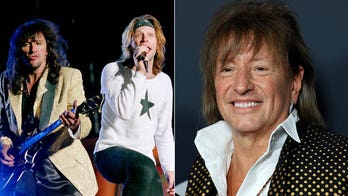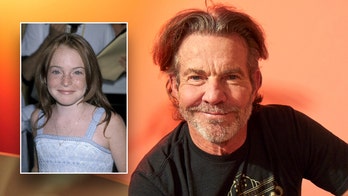Is 'Cloud Atlas' the symphony of film?
Tom Hanks, Halle Berry star in complex movie that weaves multiple storylines through several centuries
"Cloud Atlas” should not work. But it does. Lana Wachowski, Andy Wachowski and Tom Tykwer have wrangled David Mitchell’s beast of a story and delivered a haunting, full-bodied tour de force, and a completely unprecedented movie experience.
Based on Mitchell’s seemingly unfilmable novel, “Cloud Atlas” is one of the most ambitious films ever made. Its structure is so complex and delicate that just the slightest disturbance in believability of story or character could easily tip the film to disaster. But co-directors and writers Lana Wachowski, Andy Wachowski and Tom Tykwer successfully deliver a masterful tightrope act.
Like a musical sextet, “Cloud Atlas” revolves around six stories, its characters moving in harmonic progressions through the centuries. Following a reporter uncovering a murder mystery, an idealist lawyer on an epic sea adventure, a futuristic automaton sparking a revolution and a shallow con artist birthing a musical masterpiece, “Cloud Atlas” shows how the consequences of kindness and evil affect the course of our world, a map charting how each and every one of us are connected.
Like Doona Bae, with one of the most emotional performances in the film as the human fabricant Sonmi-451, says, “Our lives are not our own. From womb to tomb, we are bound to others. Past and present. And by each crime, and every kindness, we birth our future.”
Rich in symbolism and metaphor, “Cloud Atlas” is not a movie to view just once. It’s a film that is equally popcorn entertainment as it is an experience to dissect and discover again and again.
The only way to become accustomed to the outlandish structure is to be immediately thrown into the story, which the filmmakers do right away. From the start, “Cloud Atlas” bounces back and forth through each story, from the 1849 to an indeterminable post-apocalyptic future, all the while unraveling a fascinating, if not very confusing, story. If at first you find yourself confused, don’t worry, you’re not alone. “Cloud Atlas” is almost three hours and it takes about forty-five minutes for the film to catch its rhythm, but once it does it is a vastly rewarding journey.
Half the fun of “Cloud Atlas” is seeing the chameleon-like ensemble appear within each story as different characters. Tom Hanks, for example, under layers of makeup, jumps from a sniveling, squirrely doctor in 1849 to a nerdy scientist in the 1970s to a primitive man speaking pidgin in a post-apocalyptic world.
You can see Hugh Grant as a cannibal and an oil tycoon, Halle Berry as a reporter and an advanced superhuman, Jim Broadbent as a sea captain, maestro and a corrupt publisher, Doona Bae as a fabricant or bourgeois white American woman. Or Jim Sturgess as a seafaring lawyer and a futuristic Korean man, Hugo Weaving as a classic hit man or a frightening jungle ghost. Everyone from Ben Wishaw, Keith David, Susan Sarandon and James D’Arcy play multiple roles and are remarkably believable with each one.
Gender bending isn’t off the table either as Ben Wishaw appears as Hugh Grant’s wife in one of the stories and Hugo Weaving is a brutish female nurse in another. Just about on every level, “Cloud Atlas” provides a plethora of material to absorb, and seeing the actors in their different guises is just one of the many breathtaking elements to devour.
The production design is extravagant. “Cloud Atlas” looks like six completely different movies. We see 1970s San Francisco, a frightening futuristic Seoul, a primitive post-apocalyptic landscape and a sundrenched ship on a passage across the Pacific. Even though the settings are all over the map, the film still feels like one single entity.
This is also due to the essential contribution by editor Alexander Berner, who is the real star of the picture. For three hours the film cuts fluidly and rapidly through each story so that within the course of ninety seconds you may see pieces of each of the six stories. It sounds daunting and frustrating, but Berner, as well as the very tight screenplay, makes each cut and each scene feel natural with a logical progression, allowing every story to get the correct amount of coverage. Berner took a very difficult story to lay out on film and cut it in such a way that everything fits together.
Also behind the scenes, director Tykwer co-composed the beautiful score with Johnny Klimek and Reinhold Heil. Their original “Cloud Atlas Sextet” piece subtly weaves through each story, threading the characters and their respective times into a cohesive whole.
“Cloud Atlas” is a marvel of film making and storytelling that should deliver more upon each viewing.







